Nutrient-rich Foods for Weight Loss Success: Nourish Your Body with Low-Calorie Options
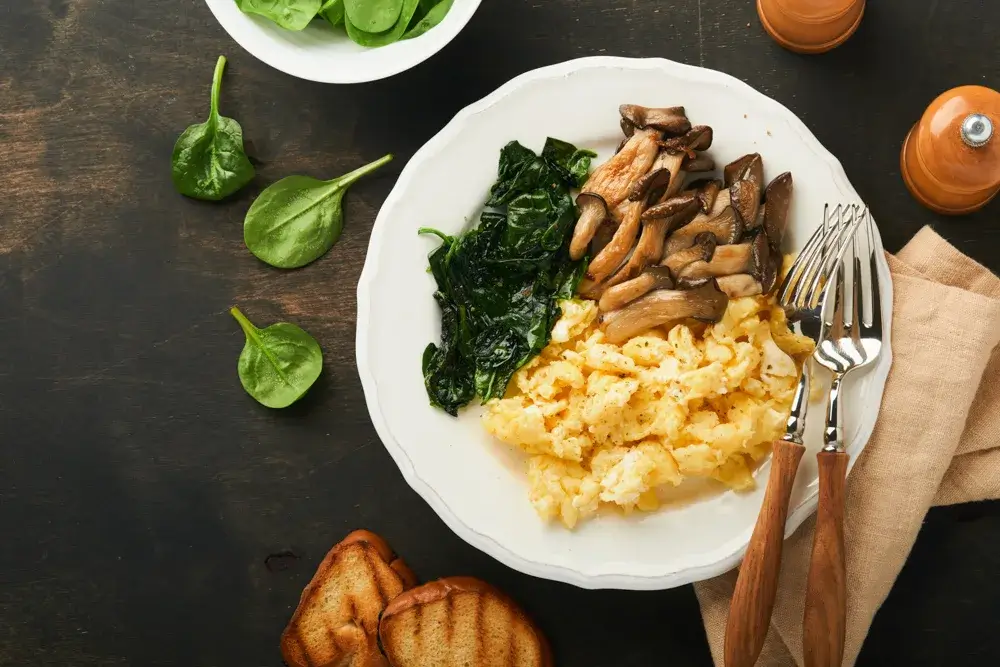
We all agree that losing weight can be challenging. Right?
But did you know that choosing the right foods makes it easier and healthier? Nutrient-rich foods are essential for anyone looking for healthy and sustainable weight loss. They not only help you lose weight but also ensure your body gets the nutrients it needs to function well.
But first, what are nutrient-rich, low-calorie foods?
These are foods packed with nutrients, vitamins and minerals but low in calories. They provide your body with crucial nutrients without adding extra calories that can lead to weight gain. Eating these foods helps you feel full longer while consuming fewer calories.
Understanding the balance between nutrient density and calorie density is key.
Nutrient density refers to how many nutrients you can get from a food compared to its calorie content. On the other hand, calorie density refers to how many calories are in a food compared to its weight or volume.
For effective weight loss, aim for nutrient-rich foods but low in calorie density. This approach not only helps with weight management but also boosts overall health, leaving you feeling better both inside and out.
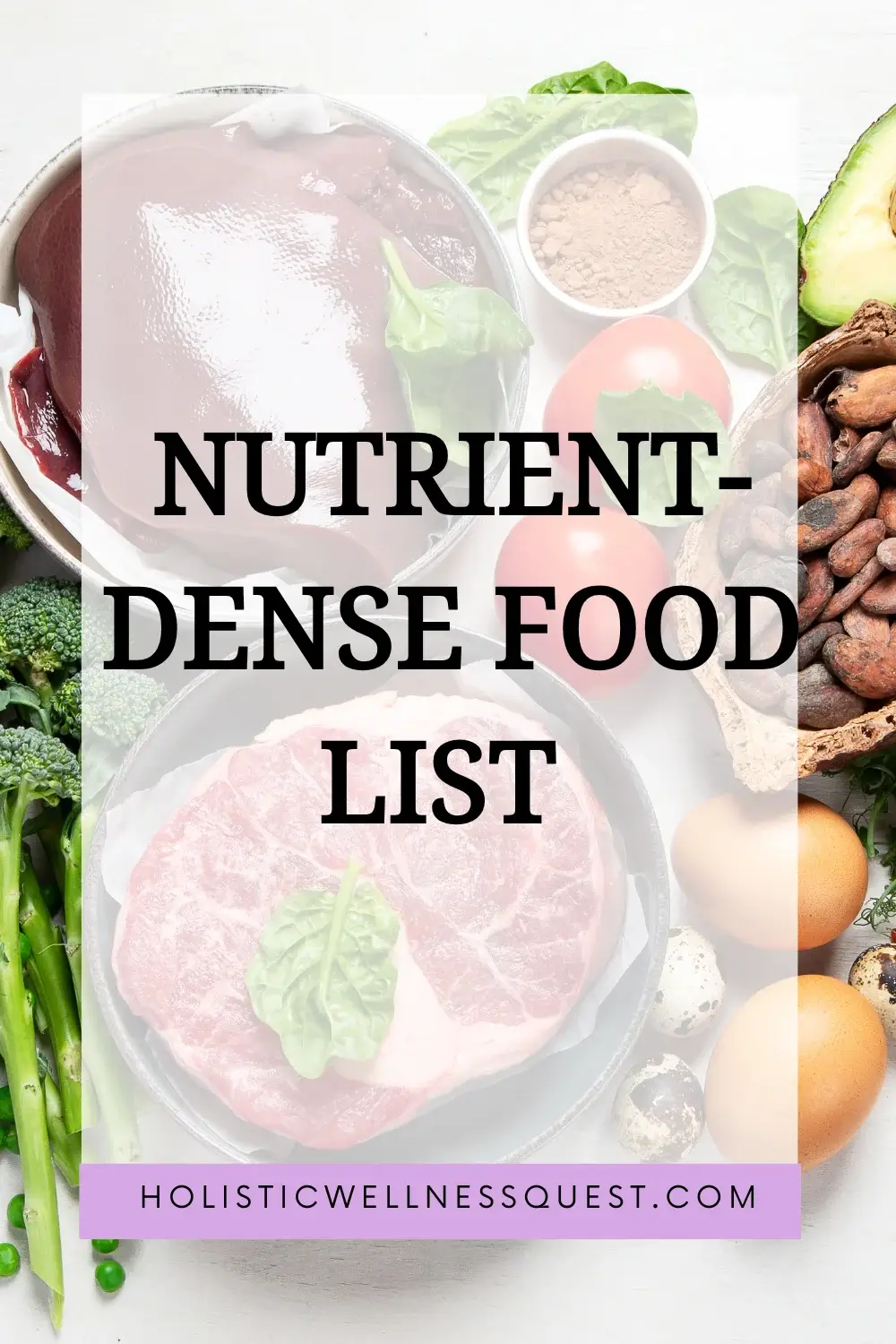
Key Takeaways:
- Choose nutrient-rich foods for weight loss success.
- Incorporate low-calorie options into your diet.
- Focus on foods that satisfy hunger without overloading on calories.
- Select foods that support your overall health and well-being.
- Consult with a registered dietitian or nutritionist for personalized guidance on your weight loss journey.
Understanding Nutrient-Rich Foods
What exactly are nutrient-rich foods?
These are foods loaded with important nutrients like vitamins, minerals, dietary fiber, and antioxidants but are naturally low in calories and unhealthy fats.
For instance, fruits and vegetables, whole grains, lean proteins, and legumes. These foods are fundamental in any healthy diet, especially for those focused on weight loss.
How do nutrient-rich foods aid in weight loss?
First, they help control your hunger. Indeed, foods high in fiber and protein can make you feel fuller for longer, reducing the urge to snack on high-calorie options.
They also help maintain steady blood sugar levels, preventing energy crashes that can lead to overeating.
Benefits of nutrient-rich foods
The benefits of a nutrient-rich diet extend beyond weight loss. These other benefits include:
- In truth, such a diet improves energy levels,
- Supports a healthy heart
- Enhances skin health
- It can also prevent various health issues, such as heart disease, diabetes, and digestive problems
By filling your plate with nutrient-dense foods, you’re not just losing weight. You’re also nurturing your body and paving the way for long-term health and wellness.
Incorporating these nutrient-packed foods into your daily diet is a powerful step towards achieving your weight loss goals while ensuring your body receives the essential nutrients it needs.
Stay tuned for more sections where we’ll delve into the best foods to eat, recipes to try, and common mistakes to avoid on your weight loss journey.
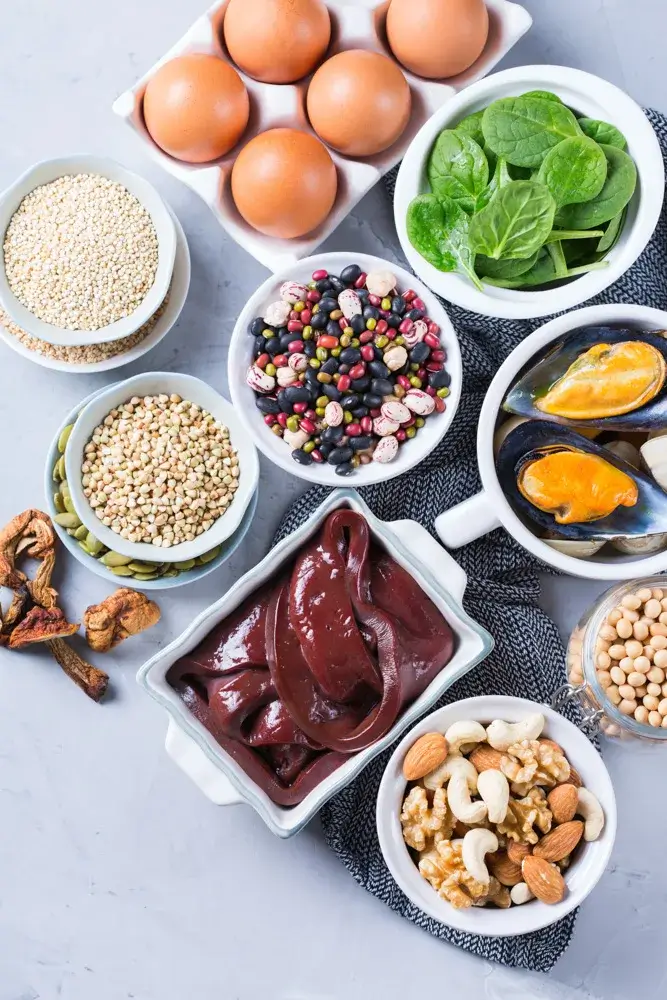
Essential Nutrients for Weight Loss
When it comes to weight loss, not all nutrients are created equal. Certain ones play pivotal roles in maintaining healthy body weight, managing hunger, and supporting overall health.
Let’s explore these essential nutrients: fiber, protein, vitamins, and minerals.
Fiber: The Hunger Manager
Fiber is a key nutrient that helps you feel full longer. Undeniably, foods rich in fiber add bulk to your diet without adding a lot of calories. And this makes fiber a powerhouse nutrient for anyone trying to lose weight.
It also helps with digestion and can prevent sudden spikes in blood sugar levels, which can curb your appetite and help you avoid unnecessary snacking.
Examples of high-fiber foods include:
- Whole grains like oats and barley.
- Fruits such as berries and apples.
- Vegetables like broccoli and carrots.
- Legumes, including beans and lentils.
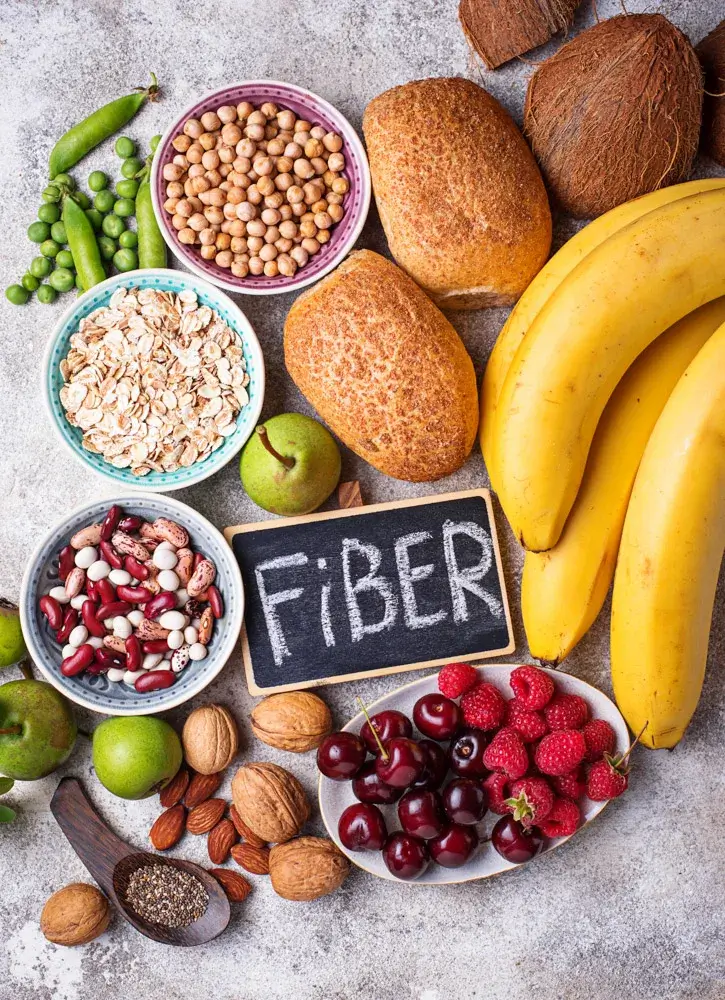
Protein: The Building Block
Protein is crucial for building muscle and repairing tissue. It also helps you feel fuller for longer, which can make it easier to eat fewer calories throughout the day. Including a good source of protein in every meal can help maintain muscle mass, especially important as you lose weight.
Protein-rich foods to consider are:
- Lean meats like chicken breast and turkey.
- Fish, especially those high in omega-3 fatty acids like salmon and mackerel.
- Plant-based proteins such as tofu and quinoa.
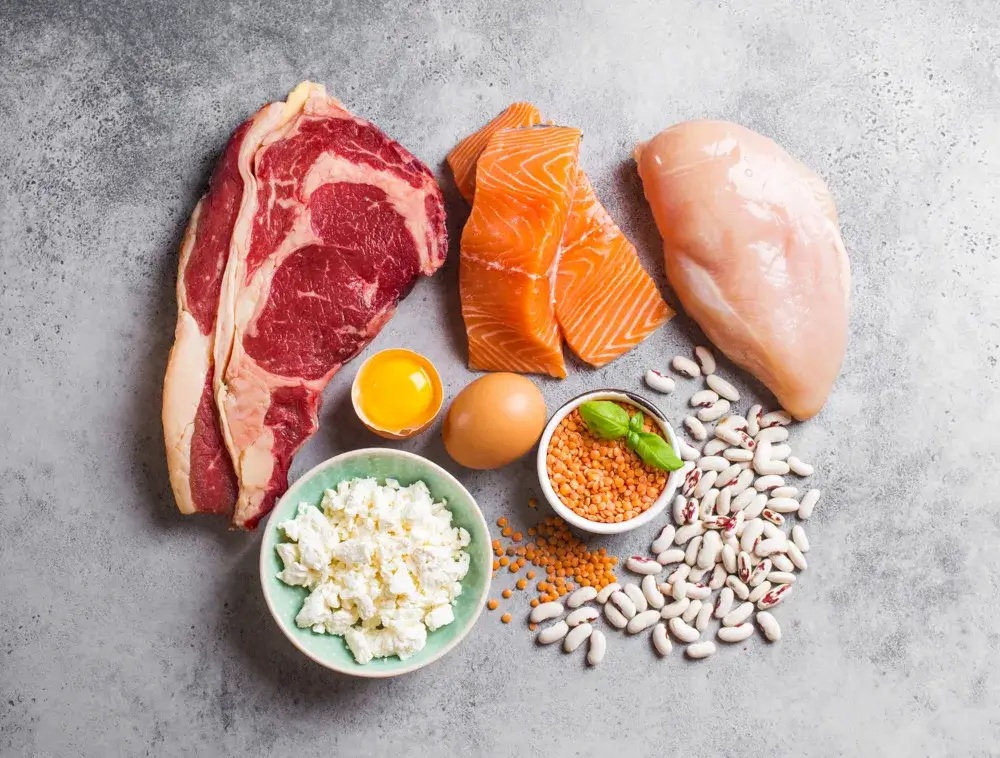
Vitamins and Minerals: The Micro-Nutrient Boosters
Vitamins and minerals support overall body functions and play a vital role in maintaining energy levels, which can be particularly important when you’re cutting calories. They help prevent deficiencies that could otherwise hinder your weight loss efforts.
Key vitamins and minerals for weight loss include:
- Vitamin C from oranges and strawberries helps with the health of your skin as you lose weight.
- Calcium in dairy products and leafy greens supports bone health.
- Potassium, found in foods like bananas and potatoes, helps balance sodium levels and maintain proper fluid balance.
- Iron from spinach and lean beef is crucial for energy levels, which keeps you active and burning calories.
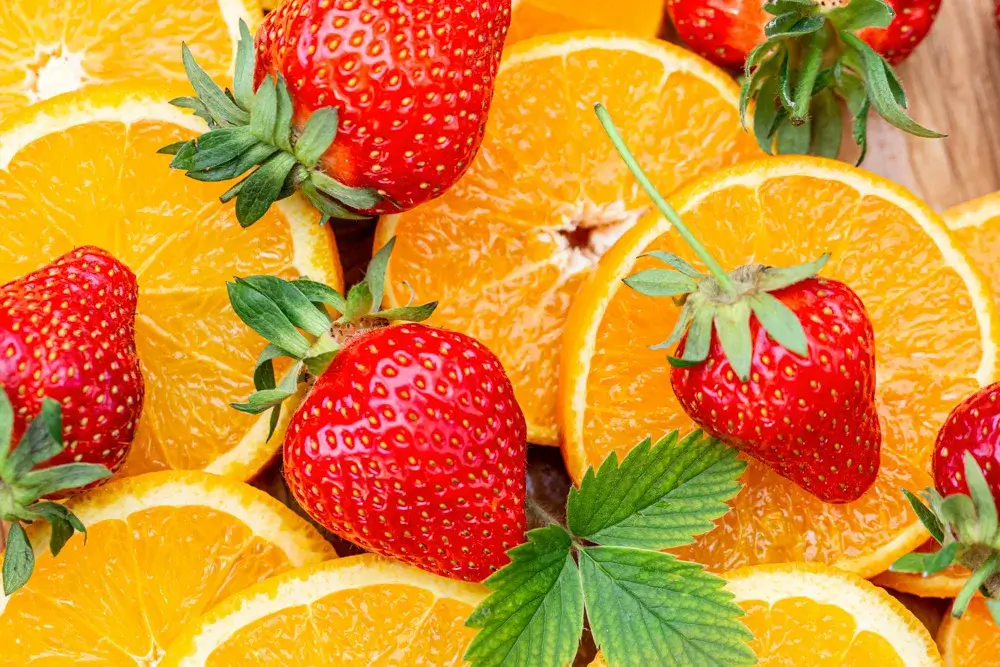
In short, including a variety of nutrient-dense foods in your diet ensures you get these important nutrients without consuming a lot of calories. This approach not only supports weight management but also contributes to a healthier, more sustainable lifestyle. Remember, the goal is not just to lose weight but to nourish your body and improve your overall health. Stay around for more tips on how to incorporate these nutrients into your daily meals and achieve your weight loss goals effectively.
Planning Your Nutrient-Rich Foods for Weight Loss
Planning a nutrient-rich diet is crucial when you’re trying to lose weight. Let’s look into how you can calculate your daily calorie needs and incorporate high-nutrient, low-calorie foods into your meals.
Calculating Your Daily Caloric Needs
To lose weight safely, you first need to know how many calories you should eat each day. This amount varies depending on your age, gender, weight, height, and activity level. However, a simple way to start is by using an online calorie calculator, which can provide an estimate based on your personal data. Remember, consuming fewer calories than your body burns is essential for weight loss.
Tips for Incorporating Nutrient-dense Foods Without Exceeding Calorie Limits
- Choose Whole Foods Over Processed: Opt for whole grains, lean proteins, and plenty of fruits and vegetables. These foods are naturally lower in calories and higher in nutrients.
- Watch Your Portion Sizes: Even healthy foods can lead to weight gain if eaten in large amounts. Therefore, use measuring cups or a food scale to keep portions in check.
- Focus on High-Fiber and High-Protein Foods: Foods high in fiber and protein help you feel fuller for longer, making it easier to eat less throughout the day.
- Plan Your Meals: Preparing meals in advance can help you stick to your calorie goals and ensure you’re including a variety of nutrient-dense foods.
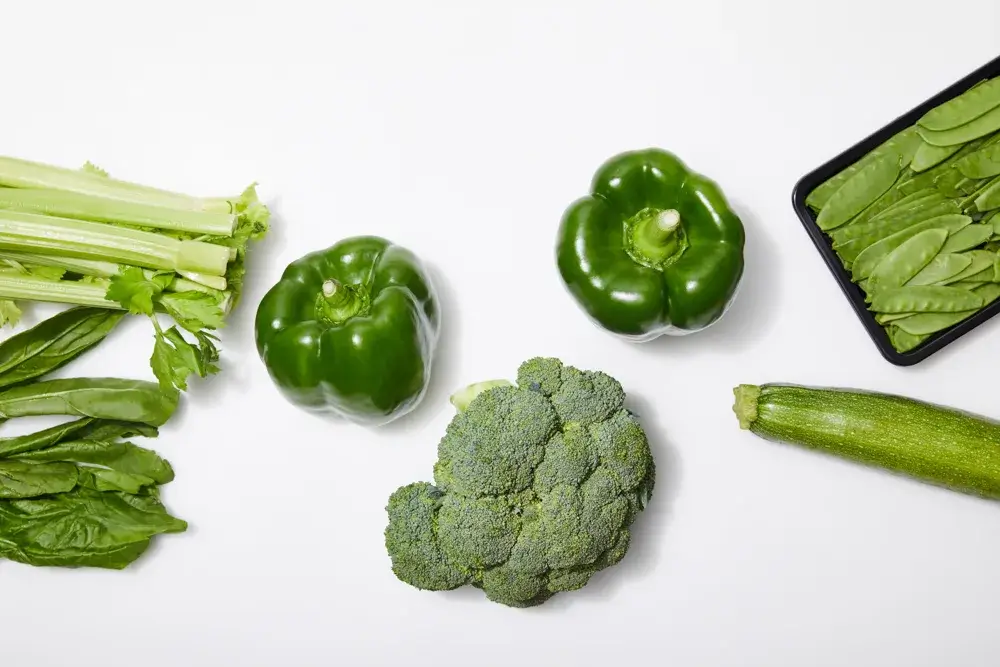
Top Nutrient-Rich Foods for Weight Loss
Fuel Your Body with Nutrient-Rich Vegetables
Vegetables are great for weight loss and your health. Indeed, they are full of vitamins, minerals, and fiber. This helps your body lose weight and stay healthy.
Include a mix of veggies in your diet. Some important ones are:
Cruciferous Vegetables
Vegetables like broccoli and cauliflower are low in calories. But, they have lots of fiber and vitamins. They help your digestion, reduce issues, and make you feel full.
Dark Green Leafy Vegetables
Spinach and kale are good for you. In fact, they have protein, vitamins, and fiber. Eating them helps your overall health and energy levels.
Crunchy Vegetables
Celery and jicama are low in calories. They are perfect for a snack. They give a nice crunch and keep you full until your next meal.
Basically, adding various veggies to your meals is smart. It ensures you get all the nutrients you need. Besides, they help with losing weight and keeping your belly happy.
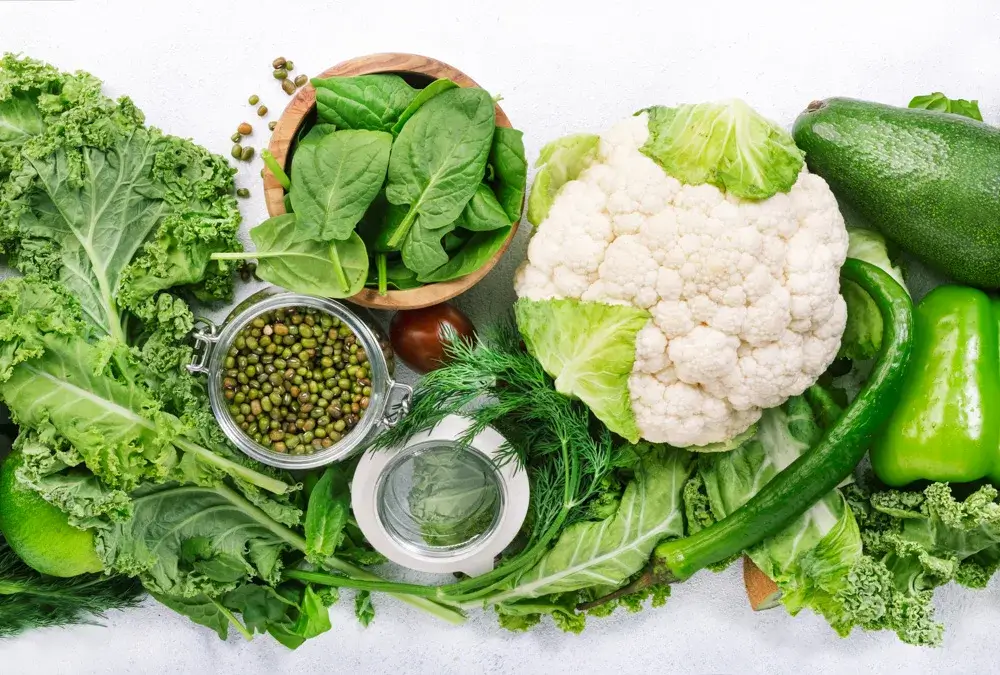
| Vegetable | Nutrition Benefits |
|---|---|
| Broccoli | High in fiber, vitamin C, and vitamin K |
| Cauliflower | Rich in vitamins C, K, and B6, as well as folate |
| Brussels Sprouts | Packed with fiber, vitamins C and K, and antioxidants |
| Cabbage | High in vitamin C and provides gut-friendly fiber |
| Spinach | Loaded with iron, vitamins A and K, and antioxidants |
| Kale | Rich in vitamins A, C, and K, as well as antioxidants |
| Swiss Chard | Provides vitamins A, C, and K, as well as magnesium |
| Celery | Low-calorie snack with fiber and vitamins A and K |
| Jicama | A crunchy, low-calorie option rich in fiber and vitamin C |
Protein Sources to feel full and Blood Sugar Stabilization
Adding lean protein to your diet helps with losing weight. Basically, it makes you feel full and steadies your blood sugar. As a result, this makes you less likely to overeat or snack on unhealthy foods.
Great choices for lean protein are:
- Chicken
- Turkey
- Grass-fed lean beef
- Legumes and lentils
Chicken and turkey are both low in fat and calories. Besides, you can cook them in different ways, like grilling or roasting, to keep things interesting.
Remember, choose grass-fed lean beef for important nutrients like iron. Grass-fed beef comes from animals raised naturally and sustainably.
If you don’t eat meat or want more plant-based options, try legumes and lentils. They are full of protein and fiber. You can add them to many dishes, like soups, salads, or stir-fries.
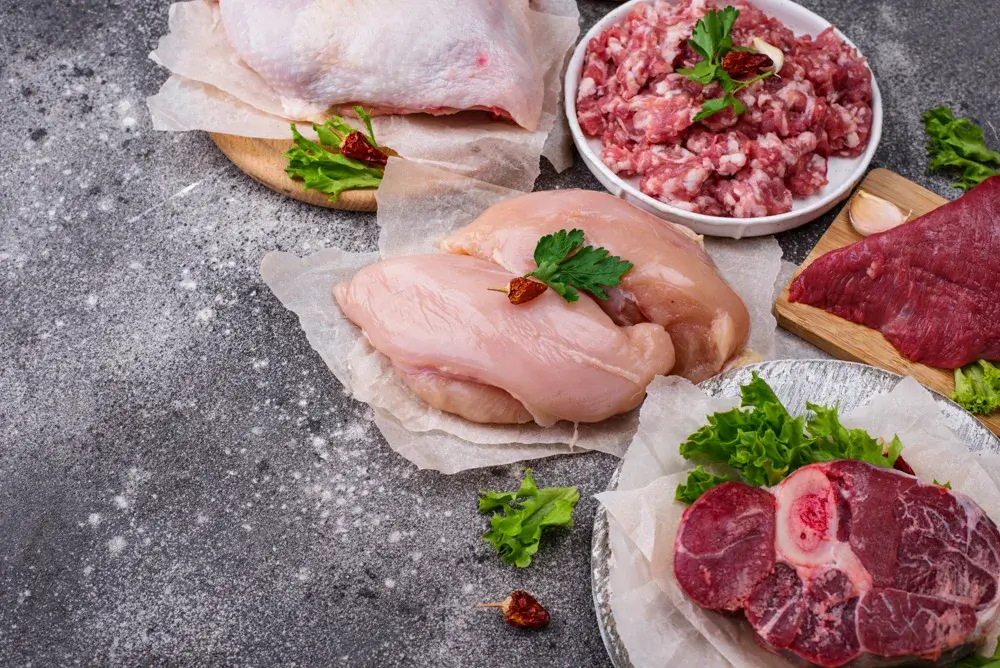
Fruits: Natural Sugars and Essential Nutrients
While fruits contain natural sugars, they are also important sources of vitamins, minerals, and fiber. They can satisfy sweet cravings with fewer calories and more nutrients than processed snacks.
Apples: Apples are tasty, low in calories, and packed with fiber. For instance, each medium-sized apple has about 4 grams of fiber. This helps you stay full and keeps your digestion moving smoothly.
Apples also have lots of vitamin C. This helps protect your cells from harm. Therefore, by eating apples, you boost your health and lower the risks of getting sick.
Berries: Berries are tiny but mighty. Think about strawberries, blueberries, or raspberries. They are full of fiber, antioxidants, and phytochemicals. These make berries really good for you.
Adding berries to your meals is a great choice. They’re sweet, low in calories, and mostly water. So, you can enjoy them without worry.
Oranges: Known for their vitamin C content, oranges are also a good source of fiber and potassium, which help support a healthy and sustainable weight loss.
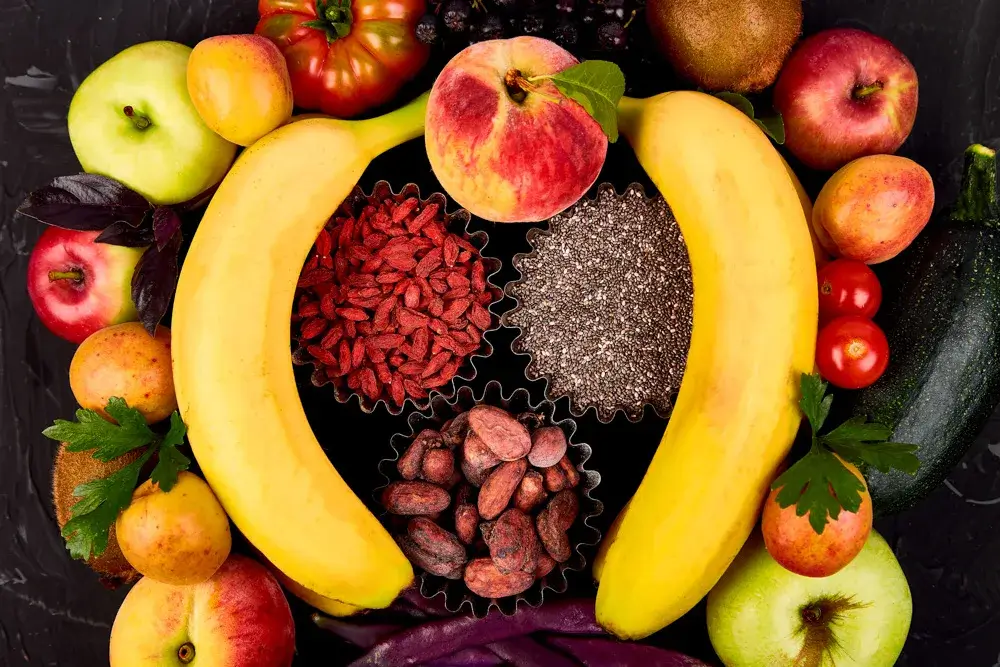
Superfoods: Nutrient Powerhouses
Eggs: A Nutrient-Packed Protein Source
Eggs are a super nutritious choice found in many meals.
- They’re rich in important vitamins and minerals. Besides, they’re a full protein source.
- Eggs have phosphorus, calcium, and potassium. These help keep our bones, nerves, and muscles healthy.
- Eggs are great for those aiming to shed pounds because of their rich protein. Since protein makes you feel full, it lowers your desire to eat.
- Besides it support growth of muscle mass, which is vital during weight loss.
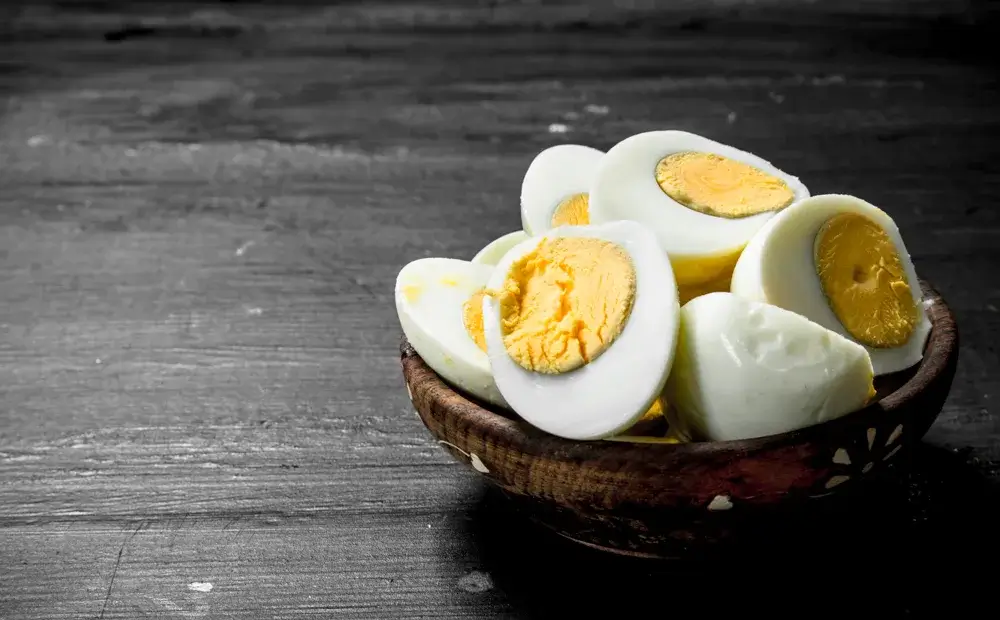
Additionally, eggs are easy to make in lots of ways for all tastes. You can eat them scrambled, poached, fried, or boiled. They make any meal tasty and filling.
Have eggs at any meal to up your nutrition. Pair them with whole-grain items, veggies, or lean meats.
Avocados: A Nutrient-Dense Fruit for Hunger Control
Avocados are great for weight loss but often ignored. They’re full of fiber and good fats. Besides, they are rich in nutrients, vitamins, and minerals for health and weight control.
- Their high fiber is key for controlling hunger. It fills you up and lowers overeating cues. Avocado’s fiber also keeps blood sugar even, avoiding cravings.
- Additionally, avocados have fats that make you feel satisfied. The good fats slow digestion, keeping you full longer. They even boost heart health.
Yet, be mindful of serving size due to their caloric content. They’re nutrient-rich but high in calories. Eating them moderately is best for health and weight goals.
Try adding avocados to salads, on toast, or in smoothies. They make creamy dips and spreads too. Get creative with recipes.
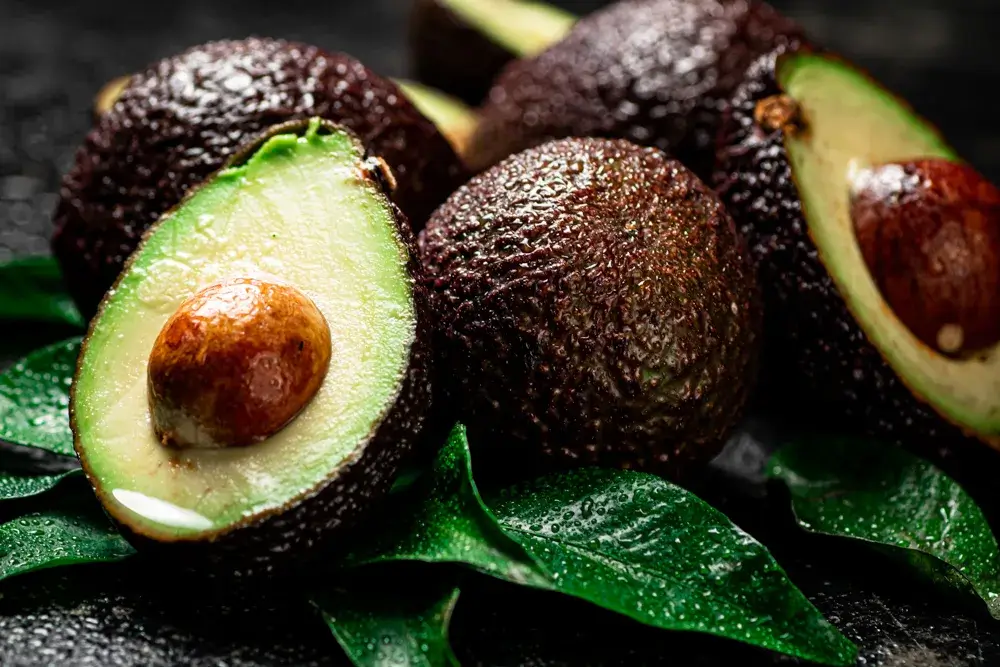
Avocado Salad Recipe:
If you’re looking for a simple and nutritious way to enjoy avocados, here’s a good salad:
| Ingredients | Instructions |
|---|---|
| 2 ripe avocados 1 cup cherry tomatoes, halved 1/2 red onion, thinly sliced 1/4 cup chopped cilantro 1 tablespoon lime juice 1 tablespoon olive oil Salt and pepper to taste | Cut the avocados in half, remove the pits, and scoop out the flesh. Place the avocado flesh in a large bowl. Add the cherry tomatoes, red onion, and cilantro to the bowl. In a small bowl, whisk together the lime juice, olive oil, salt, and pepper. Pour the dressing over the avocado mixture and gently toss to combine. Serve the salad chilled and enjoy! |
Nuts and Seeds for Healthy Fat, Nutrient-Density and Hunger Control
Nuts and seeds help with weight loss. Indeed, they are rich in nutrients and keep you full longer. They have fiber, protein, and good fats. All these make you feel full and help control hunger.
A serving of nuts or seeds each day is great. They support your weight loss goals. Moreover, you get vitamins, minerals, and antioxidants. And they come in a small, fulfilling package.
Here are some popular nuts and seeds that can be beneficial:
- Almonds
- Walnuts
- Pistachios
- Chia seeds
- Sunflower seeds
- Flaxseeds
Enjoy nuts and seeds as snacks or in recipes. Add them to salads, yogurts, or smoothies. They add crunch and nutrition to your meals.
| Advantages of Nuts and Seeds | Nutritional Content |
|---|---|
| High in fiber | Supports healthy digestion and helps control appetite |
| Source of protein | Contributes to muscle repair and growth |
| Rich in healthy fats | Provides essential fatty acids for brain health and overall well-being |
| Contains vitamins and minerals | Iron, magnesium, zinc, vitamin E, and more for optimal body function |
Remember, portion sizes matter with nuts and seeds. They are calorie-dense, but full of benefits. A serving size is usually a handful or two tablespoons.
So, include nuts and seeds in your diet. Enjoy their taste and the benefits.

Fatty Fish like Salmon and Shrimp for Protein and Omega-3s
Fatty fish, such as salmon and shrimp, are great for losing weight. They are full of protein and omega-3s.
Eating fish can change your weight journey. It makes you satisfied and controls overeating. This makes fish better than some other proteins.
- For instance, salmon is top for omega-3s. It helps with losing weight and has many other health benefits. These include a healthy heart and brain.
- Similarly, shrimp is low in calories but high in protein. It’s good for weight loss. Shrimp also has omega-3s, vitamin D, and selenium for a balanced diet.
In short, adding salmon and shrimp to your meals ensures great taste and health. Besides, you can bake, grill, or sauté them.
Eat different fish each week for a healthy diet. Choose salmon and shrimp for their nutrients. They’re also delicious options for meals.

Lupini Beans, Unripe Bananas, Raw Oats, and Sauerkraut for Gut Health and Weight Management
Looking to boost your gut health and manage weight? Try adding certain foods to your meals. For instance, lupini beans, unripe bananas, raw oats, and sauerkraut are top picks.
Lupini Beans: Nourish Your Gut with Prebiotic Fiber
Lupini beans are yummy and packed with prebiotic fiber. This fiber feeds good bacteria in your gut. It helps keep your gut healthy and digestion smooth. Besides, the fiber in lupini beans helps you feel full. Therefore, this makes them perfect for weight control.
Unripe Bananas and Raw Oats: Regulate Blood Sugar for Weight Loss
Unripe bananas and raw oats are full of a special carb called resistant starch. This starch is great for your gut and has many other health perks. Basically, this starch keeps your blood sugar steady, which helps avoid food cravings. This keeps your weight in check.
Sauerkraut: Support Your Gut with Probiotics and Fiber
Sauerkraut is full of probiotics and fiber. These help keep your gut full of good bacteria. A healthy gut is key for digesting food and getting nutrients.
Sauerkraut is also great for controlling your appetite. Eating it regularly can help you with weight management.

Sample Nutrient-Rich Foods for Weight Loss Meal Plan
First Day:
- Breakfast: Oatmeal with fresh berries and a sprinkle of flaxseed (high in fiber and omega-3 fatty acids)
- Lunch: Quinoa salad with chickpeas, cucumber, tomato, and a lemon-tahini dressing (rich in protein and healthy fats)
- Dinner: Grilled salmon, steamed broccoli, and sweet potato (loaded with protein, vitamin C, and potassium)
- Snack: Greek yogurt with sliced almonds (high in protein and calcium)
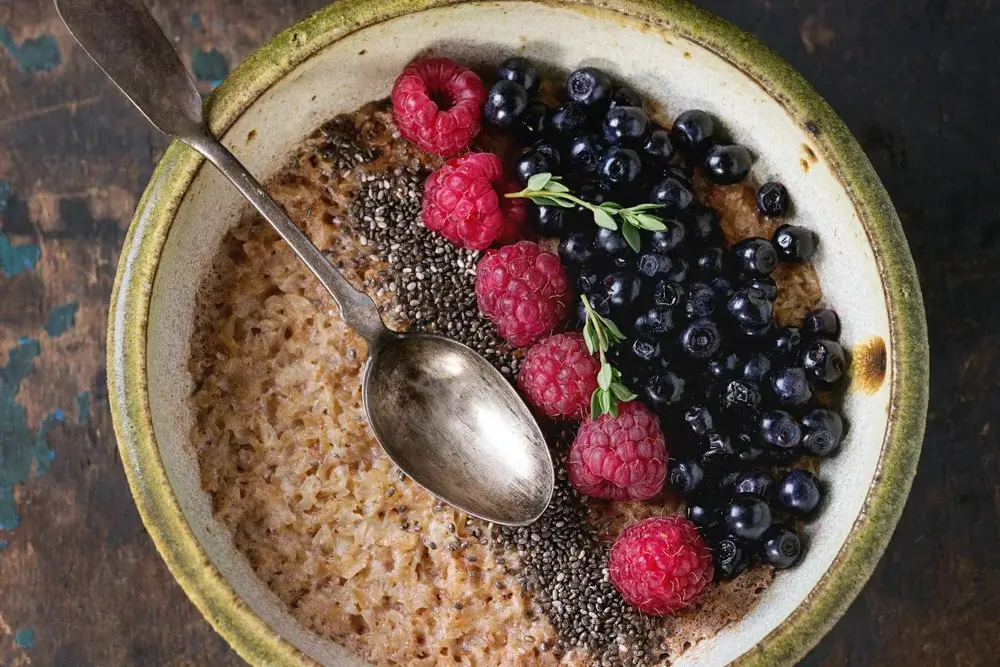
Second Day:
- Breakfast: Smoothie with spinach, banana, protein powder, and almond milk (rich in vitamins and high in protein)
- Lunch: Turkey wrap with whole grain tortilla, avocado, and lots of mixed greens (good source of fiber and healthy fats)
- Dinner: Stir-fried tofu with a mix of bell peppers, carrots, and snap peas over brown rice (nutrient-dense and full of fiber)
- Snack: A handful of mixed nuts (helps keep you full and provides healthy fats)
Third Day:
- Breakfast: Two poached eggs on a bed of sautéed spinach and mushrooms (high in protein and iron)
- Lunch: Lentil soup with a side salad dressed in olive oil and vinegar (rich in fiber and healthy fats)
- Dinner: Baked chicken breast with quinoa and steamed asparagus (complete meal high in protein and fiber)
- Snack: Apple slices with peanut butter (a tasty way to include more fiber and healthy fat)
These meal plans highlight how you can integrate a variety of nutrient-rich foods into your diet to support weight loss while ensuring you stay full and satisfied.
As you embark on your weight loss journey, remember that maintaining a balance of nutrients is key to achieving and sustaining a healthy weight.
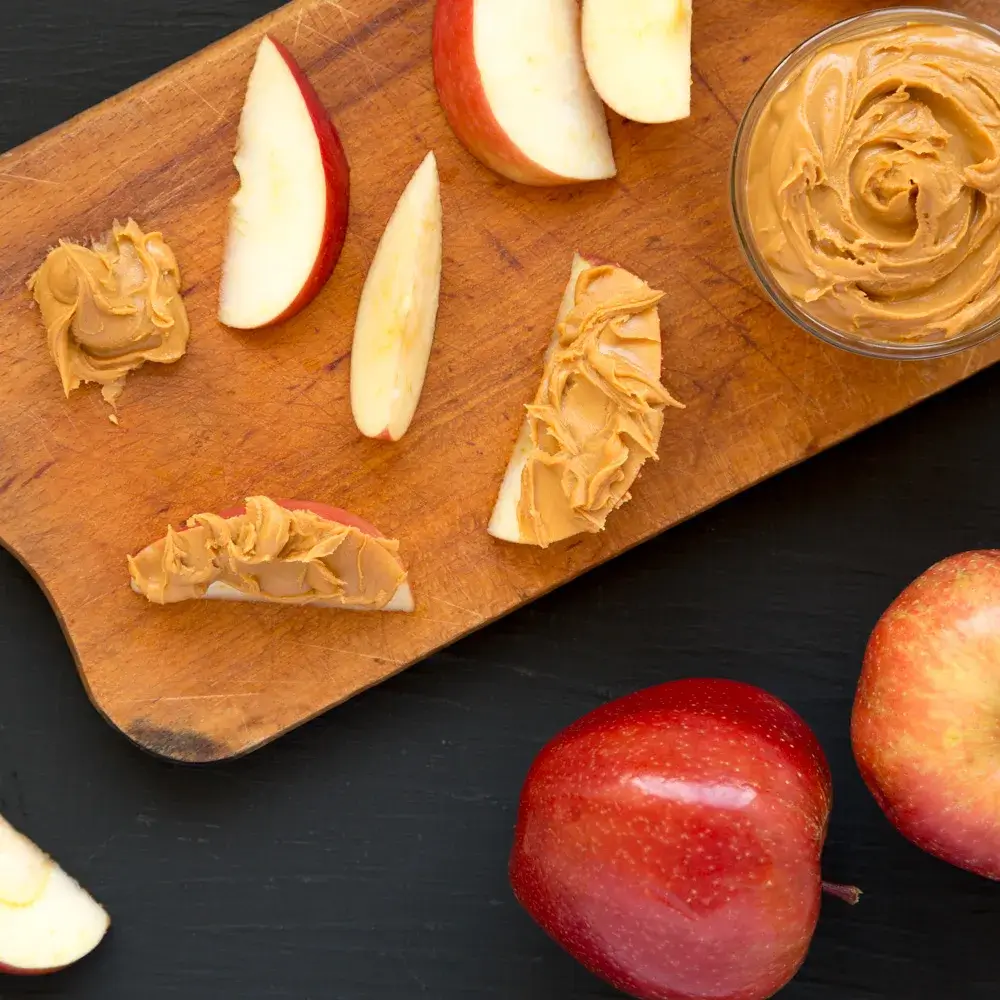
Tips for Healthy Cooking Methods That Preserve or Enhance Nutritional Value
Cooking healthily is as crucial as choosing the right foods. Using methods that preserve and even boost the nutrient content of your food can significantly enhance your weight loss efforts.
Here are some easy-to-follow tips:
- Steam Your Vegetables: Steaming preserves the fiber, color, and nutrients of vegetables better than boiling. Since no fat is added, it’s also a lower-calorie method.
- Grill for Great Flavor: Grilling lets you cook meats and vegetables without extra fat. It also helps retain more vitamins and minerals than many other cooking methods.
- Use Healthy Fats: When you need to use fat, choose healthy options like olive oil or avocado oil. These oils can withstand medium to high cooking temperatures and add heart-healthy fats to your diet.
- Slow Cooking: Slow cookers allow for better retention of nutrients by cooking at low temperatures for longer periods. This method is particularly ideal for making nutrient-dense stews and soups.
- Quick Stir-frying: This fast, high-heat cooking is great for retaining the texture and nutrients in vegetables. Use a small amount of healthy oil to keep the fat content low.
Common Mistakes to Avoid
Common Misconceptions About Nutrient-Rich Foods and Weight Loss
“All calories are the same”: Many believe a calorie is a calorie, but nutrient-rich foods can influence your metabolism, your satiety levels, and your overall health differently than nutrient-poor foods.
Pitfalls in Dietary Planning
- Ignoring Portion Sizes: Even healthy foods can lead to weight gain if eaten in large quantities. Therefore, understanding and controlling portion sizes is crucial.
- Skipping Variety: Eating the same few healthy foods repeatedly is not only boring but can lead to nutrient deficiencies. Variety ensures a broader intake of essential nutrients.
Reading Food Labels and Avoiding Marketing Traps
- Watch for “low-fat” and “fat-free” Claims: These products can still be high in calories and sugars. Always check the overall nutritional content.
- Understand Serving Sizes: Labels base their nutritional information on specific serving sizes, which can be misleading. Therefore, make sure you adjust the nutritional values based on the actual amount you consume.
- Look for Fiber and Sugar Content: Choose foods that are high in fiber and low in added sugars. This information is crucial for making healthier choices.
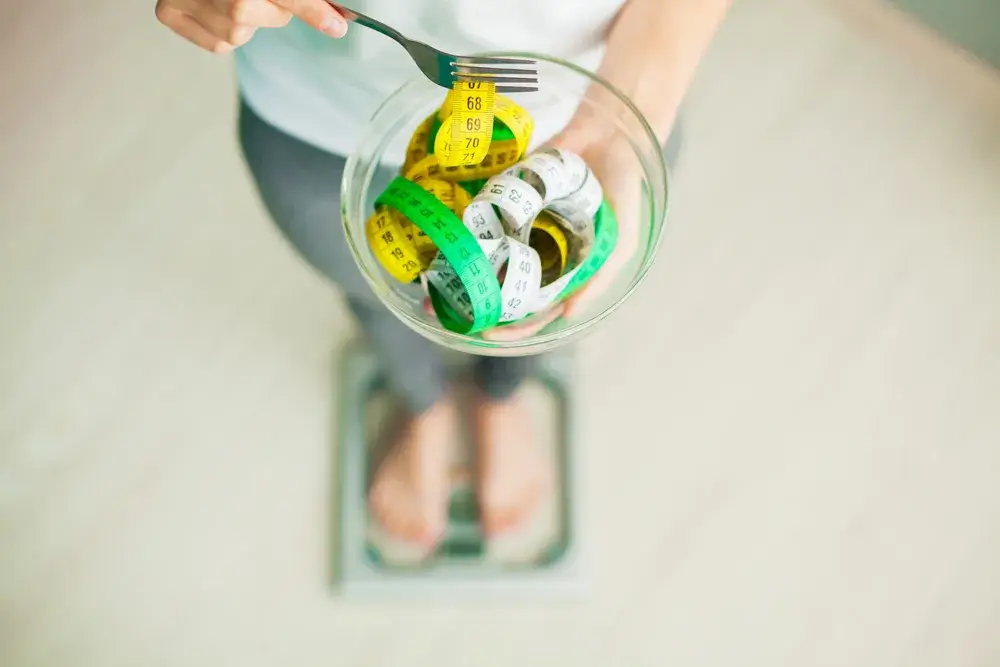
Integrating Physical Activity with a Nutrient-Rich, Weight Loss Foods
Combining diet with physical exercise is key to effective weight loss.
Here’s why it matters and some activities that work well with a nutrient-rich diet.
The Importance of Exercise
Exercise helps burn calories and builds muscle, which increases your metabolism. Basically, this makes it easier to lose weight and maintain a healthy weight. Physical activity also boosts your mood and energy levels, making it easier to stick to your diet.
Exercises That Complement a Nutrient-Rich Diet
- Cardiovascular Exercises: Activities such as walking, running, cycling, and swimming are great for burning calories and strengthening your heart.
- Strength Training: Building muscle is vital as it burns more calories than fat. Use weights, resistance bands, or body-weight exercises like push-ups and squats.
- Flexibility and Balance: Yoga and Pilates improve flexibility, core strength, and balance, which help with muscle function and injury prevention.
Sustaining a Nutrient-Rich Diet for Long-term Health
Strategies for Long-term Maintenance
- Plan Ahead: Prepare meals in advance to avoid the temptation of processed foods.
- Keep a Food Diary: Tracking what you eat can help you stay aware of your diet and make necessary adjustments.
- Be Mindful of Portions: Eating reasonable portions is crucial, even when consuming healthy foods.
Adapting As Your Needs Change
Your dietary needs can change due to aging, lifestyle adjustments, or health conditions. It’s important to adapt your nutrient intake accordingly.
Additionally, consulting a registered dietitian can provide guidance tailored to your specific needs.
The Role of Mindset and Community Support
A positive mindset can drive your commitment to a healthy lifestyle. Support from friends, family, or online communities can also play a crucial role in sustaining dietary changes.

Conclusion
In conclusion, eating foods packed with nutrients helps a lot with losing weight and staying healthy.
Include lean proteins, eggs, fruits, veggies, avocado, nuts, seeds, fatty fish, and foods good for your gut. This will give your body the good stuff it needs, helping you manage your weight.
Remember, long-term weight loss is about eating a mix of good-for-you foods. So, avoid diets that are too strict or trendy.
Additionally, talking to a dietitian or nutritionist can help. They’ll give you tips just for you, making your weight loss journey easier.
Choose well and add a variety of healthy foods to your meals. This can help reach your weight loss goal and make you feel better overall. Aiming for a healthy way to lose weight is key. It makes the process joyful and good for you in the long run.
So, start making those small changes in your diet today.
FAQ
What are some nutrient-rich foods that can help with weight loss?
Lean proteins and eggs are great, along with vegetables and avocados. Fruits such as apples and berries, nuts, and seeds are excellent. Don’t forget about salmon, shrimp, lupini beans, and sauerkraut for losing weight and feeling good.
How do lean proteins contribute to weight loss?
Lean proteins like chicken and turkey keep you full for longer. They also help lower cravings and keep your blood sugar stable.
What makes eggs a nutrient-packed protein source?
Eggs are very nutritious. They have vitamins and minerals like phosphorus and potassium. They are a full protein source. This helps you eat less, which aids in weight loss.
How do vegetables support weight loss and digestive health?
Vegetables, especially broccoli and dark leafy greens, are full of fiber and vitamins. They help your digestion and make you feel full for longer. This is good for losing weight
Are avocados beneficial for weight loss?
Avocados are good for losing weight. They have fiber and healthy fats. But, you should watch how much you eat because they are high in calories.
What makes apples and berries good choices for weight loss?
Apples and berries are good for losing weight because of their fiber and antioxidants. They are low in calories but give you important vitamins.
How do nuts and seeds contribute to weight loss?
Nuts and seeds are filled with fiber, protein, and good fats. They make you feel full and decrease your desire to eat. Just remember to eat them in moderation because they are calorie-rich.
Why are fatty fish like salmon and shrimp recommended for weight loss?
Fatty fish have lots of protein and omega-3 fatty acids. Therefore, they can help you with weight loss since they make you feel full for longer. They offer essential nutrients for losing weight in a healthy way.
Why is incorporating nutrient-rich foods important for weight loss success?
Eating healthy, nutrient-dense foods is critical for losing weight. They provide important nutrients and keep you satisfied for longer. A balanced diet with these foods is crucial for reaching your weight loss goals.